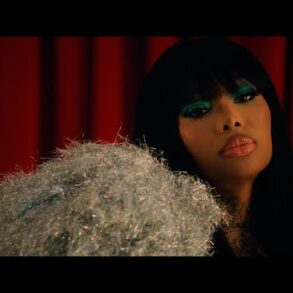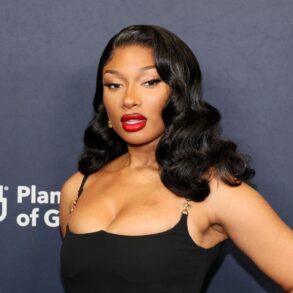The Shindellas — the vocal trio of Tamara Chauniece, Stacy Johnson and Kasi Jones — are comfortably seated on a couch in their creative headquarters in suburban Franklin, Tennessee, on a late summer day.
During the previous 30 days, they experienced top-10 Billboard success for their danceable mid-tempo soul groove “Last Night Was Good For My Soul” via the Adult R&B Airplay Charts.
Their album “Shindo” was released Friday.
“Our group’s harmony is a beautiful, buzzing frequency,” says Chauniece, a native of Houston’s suburbs.
‘Something that the world’s been missing’
Jones, a native of Bellevue, Washington, is a long-avowed musical theater fanatic and cites her love of Dorothy Dandridge and Lena Horne — groundbreaking African-American Academy Award-nominated and Grammy-winning entertainers, respectively — as her greatest creative inspirations.
For Chicago-born Johnson, she’s been a professional singer as long as she could talk and walk.
Creatively unifying the trio falls to producer-artists Claude Kelly and Chuck Harmony, who perform professionally as Louis York.
Over the past 15 years, the tandem has achieved Grammy-nominated success, including working with Miley Cyrus, Kelly Clarkson, Janet Jackson and Ne-Yo.
Via their Weirdo Workshop brand, the creative duo, as they stated in a 2021 interview, are developing The Shindellas into “something that the world has been missing.”

For Johnson, the creative partnership allows them to “reflect a unified group of empowered instruments complemented by genius musicianship that create beautiful music.”
African-American R&B-as-pop revival
As much as the African-American R&B girl-group stereotype is a beloved musical tradition, it’s fleeting and lacking depth and breadth in the multi-generational mainstream pop conversation.
Between 1964 and 2001, The Supremes, En Vogue, TLC and Destiny’s Child were the only acts that charted in Billboard’s year-end, all genre Hot 100 charts. TLC’s “Baby Baby Baby,” “Creep,” “No Scrubs” and “Waterfalls” hold most of those claims of acclaim.

And at the height of their apparent success, the members of TLC filed for Chapter 11 bankruptcy in 1995, declaring that after recouped income, the trio earned less than $50,000 a year.
The Shindellas’ “Shindo” emerged as COVID-19 shut down facets of the music industry, which deconstructed the practices and standards that defined what success could look like for Black women in said industry.
Post-pandemic, Black women’s grip on soul and pop music is unquestionable.
SZA’s “Kill Bill” sat on top of Billboard’s Hot 100 countdown for one week but has spent a record-breaking half-year on top of Billboard’s Hot R&B/Hip-Hop Songs chart.
The Shindellas’ “Shindo” could have hits that start the group on the path to mirroring previous and existing standards of success for African-American female R&B artists.
The album’s most evolved material developed from a series of conversational moments when their shared devotion to sensual love and spirituality revealed itself as songs like “Kiss and Tell” and “Up To You.”
Johnson is keen to note the album showcases the group’s evolution into artists capable of doing arduous work in recording sessions to discover sounds that expand past stereotypical expectations defined by genre.
Chauniece chimes in that the trio’s greatest strength is arriving at the material that people “don’t know that they needed.”
Tracks also include “Juicy,” described as a “vibrant,” “feel good” track.
This is “fun, yet challenging music,” continues Chauniece.
The Shindellas are glib when asked about the post-pandemic, post-modern future of African-American female girl groups in R&B.
TLC’s bankruptcy, the breaking up of groups like En Vogue, and the eventual splitting of Destiny’s Child and The Supremes must be mentioned in relation to their arc of success and potential for a long career as a unit.
“Taking ownership of our work and ourselves is important,” says Chauniece, regarding what will keep them together when so many others have fallen apart.
“Regardless of what happens, our mission is to stay focused on delivering elegant, excellent art at all times.”
This post was originally published on this site be sure to check out more of their content.





